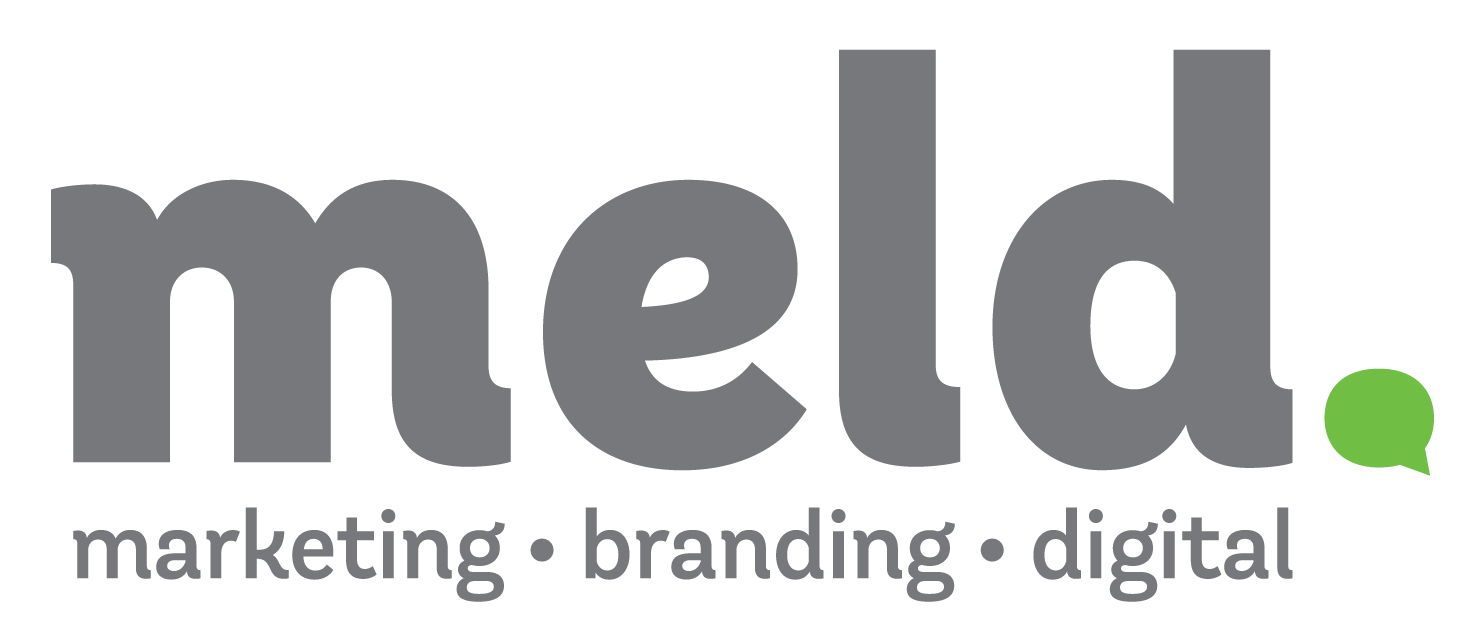Jeff: Hello everybody! This is Jeff Sears with Meld Marketing, and I’d like to introduce Gina Patterson, who’s a digital marketing strategist here at Meld. Gina’s going to talk to us today about Google Ads and specifically, paid targeted advertising on digital platforms. So why don’t you just start by telling us a little bit about paid digital advertising and targeted advertising?
Gina: Targeted advertising is using those demographics you know about your target customers or whoever you want to be engaging with you—whether that’s how old they are, where they live, what they’re interested in, different sorts of things—and using those to send relevant messages to them. Not just pushing things out for everyone in the world to see and hoping that someone who is interested in your product or service is going to see it.
Jeff: That’s probably why some of those larger platforms, like television broadcasts, hit everybody that’s watching the television channel. And granted, if you’re a home and garden enthusiast and you’re watching HGTV and you have a home and garden product, that may be a great place to advertise. But if you’re just trying to hit the same population as HGTV, there are probably other ways to do that.
Gina: Absolutely.
Jeff: Great. So one of the platforms that’s out there that we use a lot is Google Ads. We use that for our customers. Can you tell us a little bit about the Google Ads platform? It used to be Google AdWords and now it’s Google Ads.
Gina: Yeah, so there are five components to Google Ads. Most commonly Google Search. I think that’s what most people see on a day-to-day basis when you’re searching online. Say you’re searching for pizza. Typing in “pizza near me” and some searches may come up for that — the top four will be paid ads.
Another component of Google Ads is the Display Network. It’s a little more visual, and that’s what people can see if they’re reading a blog online or just looking at another website that allows advertising on it; but again, they need to be a part of the Google Display Network, so not every website can be advertised on.
Another part of Google Ads is YouTube, so thinking about video. Video is super important and having maybe a short clip before a longer video someone is wanting to watch. You can also advertise on Google is through the Shopping Network. If you have a product that’s clothing, making it so people can see the different images of what’s for sale and be able to purchase it directly through Google Shopping.
Jeff: So like, if I’m on a Google page and I click on the “shopping” tab, that’s where those ads will be?
Gina: Actually if you go onto Google Search, at the top there are Google Shopping ads for what you’re searching for, and then they’ll show up.
Jeff: Ok, so just from a general search. Cool!
Gina: And then finally, we’re thinking about the apps. So Universal App through Google Ads can encourage people to either download a mobile app if you have one or if they’re already using your app, encouraging them to take further action within the app.
Jeff: Ok and on Google Search, so that’s kind of the standard. I’m typing something into Google, I’m there on a daily basis, how do I know if something’s an ad or not? Is it always the top four?
Gina: It’s not always the top four and because there are so many searches every day, there aren’t ads for every single term. People aren’t buying every single keyword out there that exists. On the left-hand side, there’ll be a little box that says “ad,” so that’s how you will know.
Jeff: And then when you build out these platforms, how do you know that it’s working? Or not? What are your success metrics?
Gina: So when thinking about success, you definitely want to back up and say, “Okay, what is your goal?” first of all, and those metrics or KPIs are going to differ based on what the overall goal is for the particular campaign that is being built out.
Jeff: So if you’re trying to generate subscribers for Meld Intel, for example. What might you do on Google Ads to try and increase subscribers?
Gina: Yeah, and on Google Ads and really any digital platform, it’s making sure to set up conversion tracking. Not just tracking the number of clicks or the number of impressions or views, so that’s set up in the back end, in terms of conversions.
Jeff: I know you spend a lot of time working on optimizations. Do you just want to describe a little bit to folks, what is an optimization, how do you do it, you know, so on?
Gina: Definitely. Within Google Ads, the optimizations differ based on what part of Google Ads is being used. So if it’s search, really focusing a lot on the keywords and making sure that you’re showing up for those relevant keywords. If you’re a company that’s selling shirts only, you don’t want to show up for a search for pants.
Jeff: Or for golf clubs.
Gina: Right, exactly!
Jeff: Except maybe golf shirts.
Gina: Right, exactly, but golf clubs, probably not so much. That’s just wasting those marketing dollars. Keywords are really important, and also looking at the copy that’s out there. Testing out a variety of messaging, usually 3-5 different kinds of ads, and also images. What are those images that are resonating the best with people?
Jeff: So with search I know, kind of A/B testing, but maybe multiple variables. And if you see that something’s working, how can you do it better in other places, and if it’s not working, how can you tweak it or adjust it to perform better. I know sometimes people think, “I’ll just raise the bid. We’ll just pay more money and then that will suddenly generate more interest.” Is that always the case?
Gina: No, that’s definitely not always the case. There are a variety of factors, at least within Google Ads, that are taken into consideration when thinking about where the ad is even going to show up. One of the metrics that is shown is the average position, which will soon be broken down into more specifics, but right now it’s average position. If the ad is already showing up in the top positions, those first four, paying more isn’t necessarily going to get you more conversions to reach your goals. So it’s really thinking about what is in the ad and also, on the flip side of it, thinking about the page on your website that they’re landing on. Is there something on that actual page that’s not resonating and causing them to drop off?
Jeff: If I’m just paying attention to the clicks, for example, if I’m already in the first position because I’m paying enough to be in the first position, but the ad isn’t performing or people aren’t clicking through it, then it’s probably the ad.
Gina: If you’re not getting the clicks, then it’s definitely the ad, but if there’s a high volume of clicks but not a lot of conversions, then it’s the website or the page that they’re on.
Jeff: How long should you let a Google Ads campaign run to see if it’s going to be successful or not? I know some folks are like, “I’m gonna let it run for two weeks and see what happens,” but how long? I know you have some recommendations based on industry, but what are your general thoughts?
Gina: General thoughts, at least 3-6 months because that gives enough time for data to come in and then be able to make those optimizations and updates. Not just run for two weeks and say, “Oh, we didn’t see a lot of ROI, so we’re just gonna stop doing it.” Really using the platforms to learn about the audiences and go from there.
Jeff: Can you describe what remarketing is?
Gina: Yeah, that’s a good question and it’s something we work on with our clients a lot. Remarketing can be done in a lot of different ways, whether it’s by targeting people who’ve already used your website, so you know they’re familiar with you, it’s not someone you need to convince about your brand or product. Maybe you already have their contact information and that can be uploaded to different platforms and be retargeted that way.
Jeff: So if I got a newsletter list or a customer list that had thousands of email addresses, you can cross check that against the Google Ads Platform, for example, and that they can present specific ads to those individuals they can connect with that email address, and that’s more common with Gmail accounts, right?
Gina: More common with Gmail, but definitely can still be crosschecked in other ways.
Jeff: What are some of the things you recommend for remarketing as far as why people should want to return to a site they’ve already left?
Gina: If you think about the “Amazon theory”—you bought this, so you might want to buy this, that’s a really good use of remarketing. You can segment remarketing audiences by the specific pages that they’ve visited on your website. Maybe they’ve only visited the home page and you want them to continue to come back and learn more about your services, maybe people on the team, or just bring them through the marketing funnel a little bit more, so targeting them that way as well.
Jeff: Well Gina, thank you for spending some time with us. I hope you found it helpful. If you’re not already a subscriber of Meld Intel, I know I joked about it earlier, but please feel free to subscribe. Just go to meldmarketing.com, that’s our web address, no dot com, just meldmarketing.com. Scroll to the bottom, it says “subscribe to Meld Intel,” and on a regular basis, you’ll receive updates to your inbox, typically once a month or so, that include some industry insights, some Meld Marketing tips and blogs, and again even more information just like this. Have a great rest of your day, and thanks for tuning in!
Gina: Thank you!



